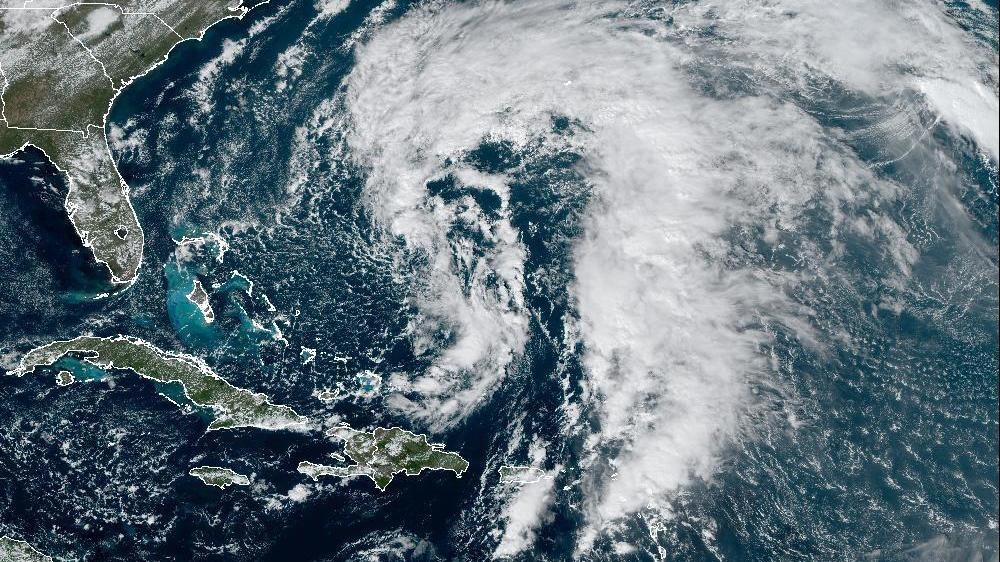Florida Hurricane Irma Breaks to South Carolina: Emergency Operations, Public Health Checks and Detection of Flood-Rescued Homes
As Florida wakes up Friday to apocalyptic, coast-to-coast damage – with searchers still going door-to-door and millions without power – deadly Hurricane Ian has begun lashing South Carolina, where an expected Friday afternoon landfall threatens more lethal flooding and could be powerful enough to alter the coastal landscape.
• Dozens of deaths reported: At least 19 storm-related deaths have been reported so far in Florida, though that number is likely to rise. Many of the deaths are in Lee and Charlotte counties.
Hundreds of rescues have taken place by land, air and sea, with residents stuck in homes or stranded on rooftops, and searchers still are performing wellness checks, especially in the Fort Myers and Naples areas, where feet of storm surge inundated streets and homes.
The storm poses deadly dangers of its own. While standing water is not always safe, officials are cautioning that maneuvering through debris-strewn buildings and streets without traffic signals can result in injury. Lack of air conditioning can lead to heat illness, and improper generator use can cause carbon monoxide poisoning.
In the North Port area where she lives, a flood- damaged home was where she rode out the storm. The ceiling was hanging down.
“And all of a sudden, the water was coming in through the doors – the top, the bottom, the windows over here,” she told CNN’s John Berman. “It’s all in my closets; I’ve got to empty out my closets.”
Tropical Storms During Nicole’s Birth: Multiple Hurricane Outs and Flooding in Florida on Super-Energy Blvd. and West Palm Beach
There were more than two million outs as of early Friday, of which more than one million were in Florida. The southwest contains Lee, Charlotte, DeSoto and Hardee counties, which have the highest percentage of residents without power.
• Historic flooding in some areas: Record flooding was recorded across central and northern Florida, including at least three rivers that hit all-time flood records. Some areas in the area had more than a foot of flooding.
Sanibel and Captiva islands in southwest Florida are completely isolated from the mainland after part of a causeway was torn away. At least two people were killed in the storm in Sanibel, and the bridge may need to be completely rebuilt, local officials said. A second bridge has collapsed and 50 feet of road essential to get to the mainland bridge has been washed out on the tiny island of Matlacha.
McMaster, of South Carolina, implored residents not to underestimate the storm’s danger and urged them to follow storm warnings closely to prepare for impact on Friday.
In addition to flooding communities behind the dunes, the storm may push sand back and deposit it inland, which could “reduce the height of protective sand dunes, alter beach profiles and leave areas behind the dunes more vulnerable to future storms,” the agency said.
The main threats to Florida are heavy rain amounts up to 7 inches, and storm surge that could rise up to 5 feet along the coast combined with high winds. Those conditions are mainly forecast for Wednesday evening and Thursday.
The National Hurricane Center warned against looking at the exact track of Nicole since it is expected to be a large storm with dangers stretching well to the north and outside the cone.
Already, the US territories of Puerto Rico and Virgin Islands are under a flash flood watch through Monday afternoon, and tropical storm watches are in effect for northwest Bahamas.
As the system forms, it will possibly churn toward Florida and the Southeast US through early this week, according to CNN Meteorologist Robert Shackelford.
Almost 8 million people were under watches for hurricanes in Florida as of early Tuesday. The storm is expected to make landfall Thursday morning above West Palm Beach, he said.
On Tuesday, which is Election Day, much of the Florida Peninsula can expect breezy to gusty conditions. In the afternoon, there is a chance of rain in the central and eastern parts of the state, including Miami and Daytona Beach.
Statewide Coordinated Emergency Management Plan for Tropical Storms in Florida After Ian’s Doomsday: Forecast and Post-Contrast
In the meantime, DeSantis said as the state continues recovering from Ian’s disastrous destruction, officials are also coordinating with local emergency management authorities across the state’s 67 counties.
The goal is to “identify potential resource gaps and to implement plans that will allow the state to respond quickly and efficiently ahead of the potential strengthening” of the storm system, said the release.
It is not certain how the upcoming storm will develop, but it is certain that the storm system could become a tropical depression by the end of the week.
The warning comes as a hurricane watch is currently in effect along the east coast of Florida, from the Volusia/Brevard county line to Hallandale Beach, according to the hurricane center.
Jamie Rhome of the NHC said in the video forecast that the storm is a “top end tropical storm or a bottom-end Hurricane” and will likely reach Florida.
The mouth of the St. Johns River to Georgetown, as well as North Palm Beach northward to Altamaha Sound, are under storm surge warnings.
Impactful in the sense it’s projected to be a strong tropical storm or a Category 1 hurricane by the time it reaches Florida by Wednesday evening into Thursday morning, Rhome said.
“Residents and visitors should monitor the forecast and make sure their storm kit is up-to-date,” Levine Cava said in a social media post. We are taking all the necessary precautions to prepare for possible flooding and power failures.
